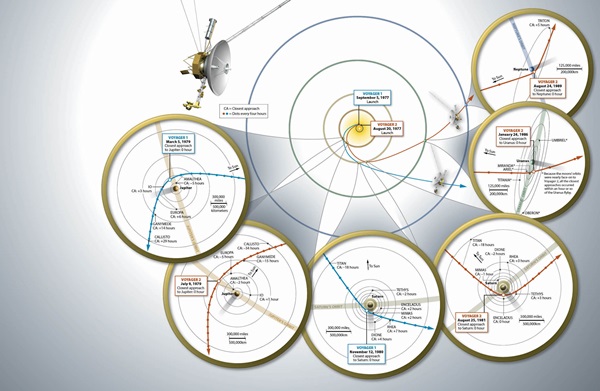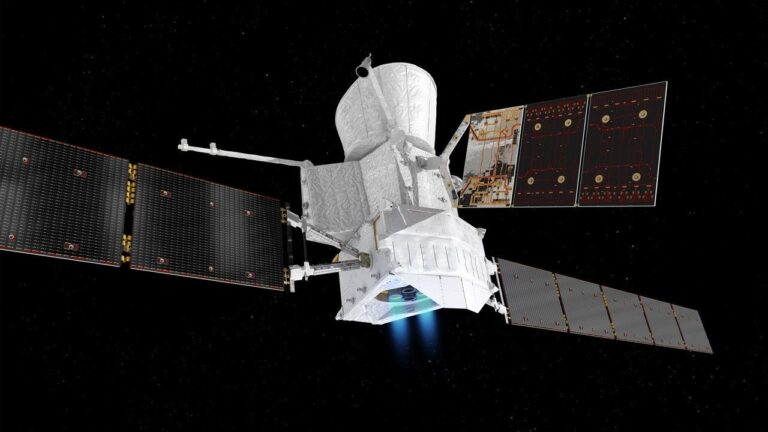Key Takeaways:
The Voyager 1 and 2 probes delivered the first detailed views of the solar system’s four giant planets and their large, shockingly diverse moons.
Voyager 2 lifted off from Cape Canaveral, Florida, on August 20, 1977, with Voyager 1 following 16 days later. (The latter earned top billing by taking a shorter, faster trajectory that got it to Jupiter first.) Scientists designed both to investigate Jupiter, Saturn, and their surroundings in exquisite detail. Voyager 1’s trajectory past Saturn ultimately flung it out of the ecliptic plane where all the planets reside.
Mission planners targeted Voyager 2 to have the option to continue on to Uranus and Neptune, provided Voyager 1 achieved its goals. Once it did, NASA gave the go-ahead for Voyager 2’s “Grand Tour.” The trajectory exploited a rare planetary alignment that allowed a spacecraft to fly past all four outer worlds in a relatively short period of time using a minimal amount of fuel. The alignment of the late 1970s and 1980s occurs only every 175 years or so.
Now, 40 years after launch, Voyager 1 lies 140 astronomical units (AU; the average Earth-Sun distance) from the Sun, and Voyager 2 resides 116 AU away. Both probes continue to explore the solar system’s outer reaches from their unique vantage points.










